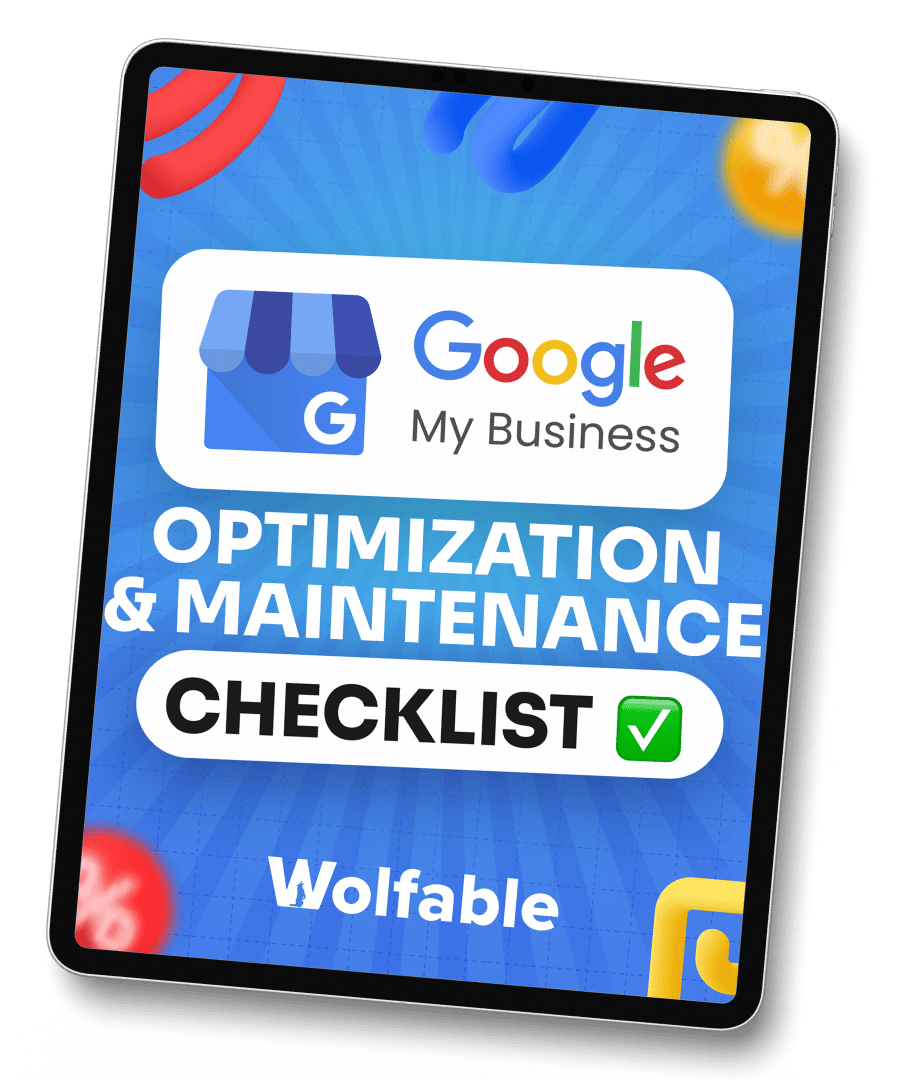Wraps up in 9 Minutes
Did you know that 77% of patients search online before booking a doctor’s appointment? That’s right—before they even pick up the phone, most people are Googling their options. For oncologists, this stat is a wake-up call. In a field where trust and expertise are everything, being visible online isn’t optional—it’s a must.
Hi there! We’re Wolfable, a creative and results-driven digital marketing agency that’s been helping businesses shine since 2016. We specialize in healthcare, and we’re here to show you how digital marketing can transform your oncology practice.
In this blog, we’ll cover everything from emerging trends to practical strategies, all customized to help you connect with patients.
So, why should oncologists care about digital marketing? Because it’s how you reach patients when they need you most—whether they’re researching symptoms or looking for a compassionate expert. Let’s explore how you can stand out in the digital world and grow your practice the smart way.
Emerging Trends in Digital Marketing for Oncologists
The digital landscape is always shifting, and oncology marketing is no exception. Curious about the latest trends? Let’s dive into what’s trending right now.
- First up, telemedicine is everywhere. Virtual consultations exploded during the pandemic, and they’re here to stay. For cancer patients, who often face mobility challenges, this is a game-changer. Offering telehealth options not only improves access but also makes your practice more appealing online.
- Then there’s patient-centric content. People want information that’s clear, helpful, and human—not jargon-filled medical speak. Think blog posts like “What Is Radiation Therapy?” or videos breaking down treatment side effects.
- Finally, AI-driven personalization is stealing the show. Imagine a chatbot answering patient questions at midnight or AI suggesting content based on what patients search for. These trends help you stay visible and relevant in a crowded digital space.
Keeping up with these shifts isn’t just smart—it’s essential. Patients expect convenience, clarity, and connection, and these trends deliver all three. Oncology is competitive, and standing out online starts with embracing what’s new.
Why Digital Marketing is Crucial for Oncologists
Oncology isn’t like other specialties—patients aren’t searching for a quick fix; they’re seeking a lifeline. So, why do oncologists need digital marketing to grow their practice? Because it solves three big challenges: visibility, trust, and education.
1. Visibility is step one. When someone searches “oncologist near me,” you want to pop up first. Digital tools like SEO and ads put you on the map—literally and figuratively—so patients can find you fast.
2. Trust is everything in cancer care. A professional website, positive reviews, and helpful content show patients you’re credible and caring. It’s not just about being seen; it’s about being chosen.
3. Education seals the deal. Cancer is overwhelming, and patients crave clear answers. Digital marketing lets you share blogs, videos, and posts that explain treatments or offer support, making you their go-to expert.
Without digital marketing, you’re invisible to the 77% of patients searching online. That’s a lot of missed opportunities to help people who need you. A strong online presence bridges that gap.
In short, digital marketing isn’t optional—it’s your way to connect with patients in a meaningful, modern way. Let’s see how to make it work for you.

Digital Marketing Strategies for Oncologists
Ready for the fun part? Here are ten actionable strategies to improve your practice online. Each one’s customized for oncologists, Let’s jump in!
1. Digital Strategy
A digital strategy is your game plan—without it, you’re just guessing. Start by setting clear goals: more patients, better awareness, or higher bookings? Then align your tools—website, ads, content—to hit those targets. Track progress with tools like Google Analytics and update your plan as trends shift to stay ahead.
For oncologists, this might mean optimizing your website for mobile use, since many patients browse on phones, or running paid ads to target local searches like “oncologist near me.” Consistency is crucial—ensure your messaging and branding are uniform across all channels. Think of it like a treatment plan: every piece works together to achieve the best outcome.
Goal Setting
- Define specific, measurable objectives (e.g., increase website traffic by 20% in six months).
- Align goals with patient needs—focus on visibility for new patients or education for existing ones.
- Set realistic timelines and budgets to ensure your goals are achievable.
Tool Alignment
- Match tools to goals—use SEO for organic growth, PPC for quick visibility, and email marketing for patient retention.
- Integrate analytics tools to measure performance across all channels.
- Use automation tools like HubSpot to streamline repetitive tasks like email follow-ups.
Data Tracking
- Use analytics to monitor performance and adjust tactics based on real-time data.
- Track metrics like click-through rates, conversion rates, and patient inquiries.
- Analyze patient behavior to identify high-performing channels and refine your strategy.
Adaptability
- Stay flexible and update your strategy as new trends or technologies emerge.
- Monitor competitors to identify gaps or opportunities in your own approach.
- Regularly review and revise your strategy—monthly or quarterly—to stay relevant.
2. Branding Strategy
Your brand is your reputation online—it's what patients feel when they see your name. For oncologists, it should scream expertise and empathy. Use consistent logos, colors, and a tagline like “Caring for You, Every Step.” Share your story—why you became an oncologist or what drives your practice—to connect on a personal level.
Patient testimonials (with consent) add authenticity and prove your impact. Highlight your mission clearly, and use reviews to show real results, not just promises. A strong brand stands out—if your site looks polished and your posts feel warm, patients will remember you over the competition.
Visual Identity
- Use consistent logos, colors, and fonts across all platforms to create a recognizable brand.
- Choose calming, professional colors (e.g., blues, greens) to reflect trust and care.
- Ensure all visuals are high-quality and aligned with your practice’s values.
Storytelling
- Share your practice’s origin story or patient success stories to build an emotional connection.
- Highlight your expertise—mention certifications, awards, or years of experience.
- Use blog posts or videos to tell your story in an authentic, relatable way.
Mission Statement
- Clearly define and communicate your practice’s mission to align with patient values.
- Focus on empathy and expertise—e.g., “Providing compassionate, cutting-edge cancer care.”
- Display your mission prominently on your website and social media profiles.
Testimonials
- Use patient reviews and stories to build trust and credibility.
- Include diverse testimonials to reflect different patient experiences (e.g., age, treatment types).
- Always get written consent before sharing patient stories or photos.
3. Web Development
Your website is your digital handshake—it’s got to impress. Make it easy to navigate with clear tabs for services, bios, and contact info. A patient portal for appointments and resources is a bonus. Use soothing colors and big fonts for readability and add CTAs like “Schedule a Visit” on every page.
Test your site on mobile—most patients browse on phones—and keep load times under three seconds. Include an FAQ section for common queries and update your blog regularly to keep content fresh. A slow or clunky site drives people away—don’t let that happen.
User Experience
- Design for simplicity—clear menus, intuitive navigation, and fast load times.
- Use breadcrumbs and search bars to help patients find information quickly.
- Test user flows (e.g., booking an appointment) to eliminate friction.
Mobile Optimization
- Ensure your site looks and functions well on smartphones and tablets.
- Use responsive design to adapt layouts for different screen sizes.
- Test mobile speed and usability with tools like Google PageSpeed Insights.
Patient Portals
- Offer online booking, test results, and secure messaging for convenience.
- Ensure portals are HIPAA-compliant to protect patient data.
- Provide tutorials or FAQs to help patients use the portal effectively.
Calls-to-Action
- Place prominent CTAs to guide visitors toward booking or contacting your practice.
- Use contrasting colors for CTA buttons to make them stand out.
- Test CTA wording (e.g., “Book Now” vs. “Schedule a Consultation”) for effectiveness.
4. SEO (Search Engine Optimization)
SEO gets you found on Google—crucial when patients search “best oncologist.” Research keywords like “cancer treatment options” and use them in your site and blogs. Claim your Google My Business listing with updated info and encourage happy patients to leave reviews—Google loves fresh, positive feedback.
Optimize for local SEO by including your city in keywords (e.g., “oncologist in [City]”). A mobile-friendly site is a must, since most searches happen on phones. Write blogs on cancer topics to boost rankings—like “How to Choose an Oncologist”—and use free tools like Google Keyword Planner to stay on track.
Keyword Research
- Identify high-value, low-competition keywords relevant to your services.
- Focus on long-tail keywords (e.g., “best oncologist for lung cancer in [City]”).
- Use tools like SEMrush or Ahrefs to analyze keyword difficulty and search volume.
Local SEO
- Optimize for location-based searches and manage your Google My Business profile.
- Encourage patients to leave reviews and respond to them to boost credibility.
- Include local keywords in meta tags, headers, and content for better rankings.
Technical SEO
- Ensure your site is fast, mobile-friendly, and easy to navigate.
- Use structured data (schema markup) to help Google understand your content.
- Fix broken links and optimize images to improve site performance.
Content Creation
- Regularly publish blogs or articles on cancer-related topics to drive organic traffic.
- Write in-depth guides (e.g., “Understanding Radiation Therapy”) to rank for competitive terms.
- Update old content to keep it relevant and maintain rankings.
5. Content Marketing
Content is your chance to educate and connect—think blogs, videos, or infographics. Topics like “What Is Immunotherapy?” or “Coping with a Diagnosis” answer real patient questions. Write like you’re chatting with a friend—no medical jargon—and use bullet points or images to break up text.
Post consistently to stay relevant and share your content on social media for extra eyes. A blog post on “Managing Side Effects” can ease fears and position you as a trusted resource. Quality content keeps patients coming back and Google happy.
Topic Selection
- Choose topics that address patient pain points or common questions.
- Research trending cancer-related queries using tools like AnswerThePublic.
- Focus on evergreen topics (e.g., “Preparing for Chemotherapy”) for long-term value.
Format Variety
- Use blogs, videos, infographics, and podcasts to cater to different learning styles.
- Create downloadable guides or checklists for added patient value.
- Experiment with interactive content like quizzes to boost engagement.
Promotion
- Share content across social media, email newsletters, and patient forums.
- Collaborate with cancer support groups or influencers to expand reach.
- Use paid ads to promote high-value content to targeted audiences.
SEO Integration
- Optimize content with keywords to improve search rankings.
- Use internal linking to guide readers to related content on your site.
- Monitor content performance with analytics to identify what resonates most.
6. Social Media Marketing
Social media is your megaphone—use it to reach patients and peers alike. Platforms like Facebook and Instagram are great for sharing cancer tips or patient stories (with permission), while LinkedIn shines for networking and thought leadership. To maximize reach, once or twice a week keeps your practice visible.
Engagement is key—don’t just post and ghost. Answer questions, run Q&A sessions, or share infographics about treatments. Patients love seeing the human side of your practice, so try posting a “Day in the Life” story on Instagram or a quick tip like “3 Ways to Boost Energy During Treatment.” It’s simple, shareable, and builds trust fast. Remember to engage with followers by replying to comments to spark conversations.
Platform Selection
- Choose platforms based on your goals—Facebook and Instagram for patient engagement, LinkedIn for professional networking.
- Analyze platform demographics to ensure your audience is active (e.g., older patients on Facebook, younger on Instagram).
- Avoid less relevant platforms like TikTok unless it is targeting younger caregivers or survivors.
Content Types
- Share a mix of educational content (e.g., cancer tips), human interest stories (e.g., patient journeys), and professional updates (e.g., conference attendance).
- Use visuals like infographics or short videos to explain complex topics like immunotherapy.
- Post patient stories (with consent) to build emotional connections and trust.
Engagement Tactics
- Use polls, Q&A sessions, and live videos to interact with your audience in real-time.
- Respond to comments and messages promptly—patients value quick, caring replies.
- Encourage followers to share posts, especially tips or resources, to expand your reach.
Consistency
- Maintain a regular posting schedule to keep your audience engaged and your practice top-of-mind.
- Use scheduling tools like Buffer or Hootsuite to plan posts in advance.
- Monitor analytics to see which posting times get the most engagement and adjust accordingly.
7. Performance Marketing
Performance marketing is all about results you can measure—like clicks or bookings. Pay-per-click (PPC) ads target searches like “cancer specialist near me,” and you only pay when someone clicks. Use local keywords to attract nearby patients and track every click to see your ROI in real time.
Retargeting keeps you in front of patients who’ve visited your site but didn’t act. Saw your blog but didn’t call? A gentle ad reminder can bring them back. Test small budgets first to find what works, then scale up for bigger impact. For oncologists, this means more patients, less guesswork.
PPC Basics
- Set up ads on platforms like Google Ads or Facebook to target specific keywords or demographics.
- Focus on high-intent keywords like “best oncologist” or “cancer treatment near me.”
- Use ad extensions (e.g., location, call buttons) to make ads more clickable.
Local Targeting
- Use geo-targeting to reach patients in your area, maximizing relevance.
- Include city or neighborhood names in your keywords for better local results.
- Monitor local search trends to adjust your targeting as needed.
Retargeting
- Serve ads to users who’ve interacted with your site but haven’t converted, encouraging them to return.
- Use dynamic ads to show specific services or content they viewed (e.g., chemotherapy info).
- Set frequency caps to avoid overwhelming patients with too many ads.
Budget Management
- Start with small tests, analyze performance, and adjust budgets accordingly.
- Allocate more budget to high-performing campaigns and pause underperformers.
- Use analytics to calculate cost-per-acquisition and optimize for efficiency.
8. Email Marketing
Email is a quiet powerhouse—it keeps patients connected without being pushy. Send newsletters with tips like “Nutrition During Cancer Treatment” or updates on new services. Personalize it—new patients get a welcome note, while regulars get customized advice. A quick “Happy to Help” email after an appointment builds loyalty.
Keep it simple and useful—use subject lines like “Your Guide to Chemo Prep” and add a “Book Now” button for easy action. Send on weekdays, ideally in the morning, for the best open rates. Patients will appreciate the thought, and you’ll stay top-of-mind.
Content Variety
- Include educational content, practice updates, and patient stories to keep emails engaging.
- Share links to relevant blog posts or videos for additional value.
- Avoid overloading emails—stick to one main topic per message for clarity.
Segmentation
- Custom emails based on patient status (new vs. returning) or treatment type for relevance.
- Use CRM tools to track patient interactions and segment accordingly.
- Send targeted campaigns—e.g., breast cancer resources for specific patients.
Calls-to-Action
- Use clear CTAs like “Schedule Your Next Appointment” to drive action.
- Place CTAs at the top and bottom of emails for visibility.
- Test different CTA styles (e.g., buttons vs. text links) to see what works best.
Timing
- Send emails when patients are most likely to engage, such as midweek mornings.
- Avoid weekends or late evenings, as open rates tend to drop.
- Use A/B testing to find the best send times for your audience.
8. Video Marketing
Videos grab attention like nothing else—perfect for explaining tricky topics. Record a 1-minute clip on “What Happens in Radiation Therapy” or a patient thanking your team. You don’t need fancy gear—just a phone and good light. Post on YouTube and Instagram and add keywords like “cancer care tips” to titles.
Keep videos short—under two minutes—to hold viewers’ interest and add captions for accessibility. Share patient stories (with permission) for emotional impact, or a quick “Meet Your Oncologist” video to build trust. Patients love seeing your face—it’s personal and reassuring.
Content Ideas
- Create explainer videos, patient testimonials, or behind-the-scenes looks at your practice.
- Produce educational series (e.g., “Cancer Treatment 101”) for ongoing engagement.
- Highlight community events or charity partnerships to show your practice’s values.
Platform Strategy
- Upload to YouTube for searchability and share snippets on social media.
- Embed videos on your website to increase dwell time and SEO rankings.
- Use Instagram Reels or Stories for bite-sized, shareable content.
Production Tips
- Use natural light, speak clearly, and keep edits simple for authenticity.
- Invest in a basic microphone for better audio quality.
- Practice your script to sound confident and approachable.
Accessibility
- Add captions and transcripts to make videos inclusive for all patients.
- Use descriptive titles and tags for better searchability.
- Test videos on different devices to ensure compatibility.
8. AI Solutions
AI is your secret weapon—it saves time and boosts results. Chatbots can answer “What’s my appointment time?” at 2 a.m., while AI predicts what content patients want next. Use it to analyze data and customized campaigns—like sending a lung cancer resource to a patient who searched for it.
Start small with a basic chatbot for FAQs, then use AI to track what patients click on and personalize offers based on their journey. At Wolfable, we use AI to make campaigns sharper—it’s like having a 24/7 assistant that knows your patients inside out.
Chatbots
- Implement AI chatbots to handle common inquiries and free up staff time.
- Train chatbots to provide empathetic, accurate responses for cancer-related questions.
- Integrate chatbots with your website and social media for seamless access.
Data Analysis
- Use AI to identify trends in patient behavior and optimize content accordingly.
- Analyze click patterns to determine which services or topics interest patients most.
- Use predictive analytics to forecast peak appointment times or patient needs.
Personalization
- Deliver customized emails or ads based on patient interactions with your site.
- Use AI to recommend relevant blog posts or resources based on search history.
- Test personalized campaigns to see which approaches drive the most engagement.
Predictive Tools
- Forecast patients need to improve service delivery (e.g., seasonal flu shots for cancer patients).
- Use AI to identify at-risk patients for follow-up outreach or screenings.
- Monitor AI performance to ensure accuracy and relevance over time.

Analytics and AI in Oncology Marketing
Data-driven marketing is key to understanding what works. Analytics tracks essential metrics like website visits, content engagement, and appointment bookings. If your “Chemo Tips” blog is gaining traction, analytics will show its performance, helping you refine content strategies.
AI takes this a step further by predicting patient behavior and optimizing campaigns. It analyzes trends to personalize outreach, ensuring the right message reaches the right audience at the right time. This boosts patient trust and improves marketing efficiency.
Imagine pinpointing the exact ad or search term that led to a new patient booking. AI-powered tools identify these insights, allowing oncologists to invest in high-performing campaigns. At Wolfable, we leverage advanced analytics to maximize engagement and streamline patient acquisition.
Why Choose Wolfable for Digital Marketing for Oncologists?
At Wolfable, we recognize the specific challenges oncologists face in digital marketing. With extensive experience in healthcare marketing, we craft customized strategies to help you connect with patients, enhance trust, and grow your practice effectively.
- Expertise in Oncology MarketingOur team understands the nuances of oncology marketing, ensuring campaigns are informative, compassionate, and compliant with medical industry standards. We help you engage patients while maintaining credibility and sensitivity.
- HIPAA Compliance and Data SecurityPatient confidentiality is crucial in oncology care. At Wolfable, we implement strict HIPAA-compliant measures to protect patient data, ensuring your practice maintains trust and meets regulatory requirements.
- Personalized Marketing StrategiesEvery oncology practice is unique. We develop customized marketing strategies based on your specialization, patient demographics, and growth objectives to maximize outreach and impact.
- Data-Driven Approach for Better Results We track key performance metrics such as patient inquiries, appointment bookings, and content engagement. Our data-driven approach ensures continuous optimization, improving ROI and patient acquisition.
With Wolfable, you gain a strategic partner dedicated to helping your oncology practice thrive in the digital space.
Conclusion
Digital marketing is the key to expanding your reach, building patient trust, and making a lasting impact. From SEO to social media and data-driven strategies, a strong online presence ensures oncologists connect with the right patients at the right time.
At Wolfable, we specialize in creating tailored marketing strategies that deliver real results. Whether you want to increase patient inquiries, enhance engagement, or grow your practice, we’ve got you covered.
Ready to transform your oncology practice with powerful digital marketing? Contact Us today and take the first step toward measurable growth and patient success.
FAQs
Healthcare Marketing Agency in London, UK
Wolfable is a full-service healthcare marketing agency in London, UK dedicated to helping hospitals, doctors, and wellness clinics grow their presence and attract more patients. We offer comprehensive services, including auditing strategies and marketing for Oncologists. Our expertise spans new patient acquisition programmes, search engine marketing, web development, e-commerce solutions, social media marketing, and YouTube marketing. With a deep understanding of the healthcare sector, our strategies are tailored to meet your specific needs, ensuring compliance and delivering measurable results. Whether you aim to enhance your online reputation or expand your practice, Wolfable is here to help you succeed, connect with us today!









